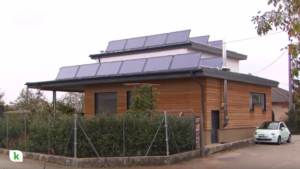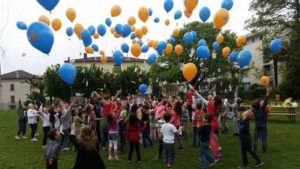Austria: Campaign with 270 million Impressions
November 1, 2010solar campaign
 Between February and May 2010, the solar campaign “Clever people heat with the sun” (Schlaue heizen mit der Sonne) promoted solar thermal technology across all of Austria’s main media channels: radio, television, newspapers and special interest magazines. The marketing measures reached a total of almost 270 million impressions (see the table below).
Between February and May 2010, the solar campaign “Clever people heat with the sun” (Schlaue heizen mit der Sonne) promoted solar thermal technology across all of Austria’s main media channels: radio, television, newspapers and special interest magazines. The marketing measures reached a total of almost 270 million impressions (see the table below).
The Austrian industry association Austria Solar initiated the campaign and organised it in cooperation with the Federal Ministry of Agriculture, Forestry, Environment and Water Management, and the Climate and Energy Fund. The total budget available amounted to EUR 543,000, of which EUR 393,000 came from the Climate and Energy Fund, and EUR 150,000 from members of Austria Solar.
| Media Channel |
Name |
Number of ads/spots |
Number of impressions |
| Radio |
Ö3 |
162 |
235,000,000 |
| Newspapers |
“Bauen Wohnen leben” (Krone) |
7 |
19,971,000 |
| Television |
ORF |
21 |
14,084,000 |
| Special interest magazine |
5 |
200,000 |
|
| Internet |
solarwaerme.at and krone.at |
— |
130,043 |
| Hotline |
solarwärme Info Hotline |
— |
462 |
| Total |
269,243,000 |
Number of impressions reached by the solar campaign “Clever people heat with the sun”.
Source: Final report (see the attached document, German only)
According to a telephone survey among 1,000 people in both January and May 2010, “Clever people heat with the sun” significantly increased awareness for solar heating and cooling technologies among respondents aged 30 and above. Before the campaign, the share was at 40 %. After the start of the campaign, 44.5 % of the respondents in this target group spontaneously named solar energy as one way to heat water and rooms domestically, a plus of 10 % if based on the entire population.
The survey revealed that advertising in newspapers was the most influential measure of all. 31 % of the interviewees could recall a newspaper ad, which is by far the largest share reached for any marketing measure. 24 % remembered the campaign from a company brochure and 18 % have seen a spot on TV. Radio was least effective: Only 5 % of the people interviewed mentioned it, which counts by far the highest number of impressions (see table above).
“We are satisfied with the high awareness for solar heating and cooling in Austria,” Roger Hackstock, Managing Director of Austria Solar, summarises the results. Despite the success of the campaign, the Austrian solar thermal market is still stagnating. Why? “The customers need a specific reason or stimulus to decide on buying a solar water heating system,” explains Hackstock. “This can either be an increase in energy prices, a special offer or an additional rebate, all of which is currently not in sight.” The second reason: A great need for information. There are a few typical questions which almost every end consumer has asked the hotline: What about the life time and the reliability of the product? How will the assembly work in my house? Is it economical to heat hot water and rooms through the sun?
According to Hackstock, the need for information can best be met by attending the European Solar Days, which will take place in Austria at the 7/8 May 2011. Around 500 events are planned to convince potential customers of the advantages of solar heating and cooling technology.
More information:
http://www.klimafonds.gv.at
http://www.solarwaerme.at
http://www.lebensministerium.at
http://www.solardays.eu/


